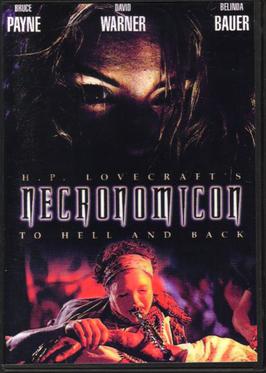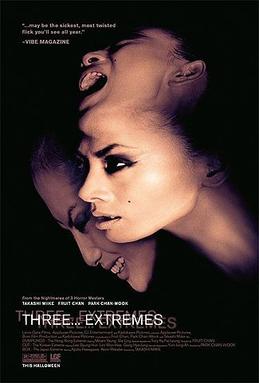Dr. Terror's House of Horrors
Peter Cushing. That should be enough for you, but if not, this 1965 effort from Amicus is sure-fire beer and pizza viewing. There are far scarier films, there are far funnier films, and there are many other horror films you can make witty(?) remarks about, but for me this one has the lot. Cushing plays a strange chap who offers five train passengers a chance to see their future in his deck of Tarot cards. No prizes for guessing which card turns up quite frequently. It seems that nobody's future involves a win on the Premium Bonds. Instead we enjoy tales of werewolves, vampires, voodoo, carnivorous plants, and a disembodied hand that really annoys Christopher Lee. Written by Milton Subotsky and directed by Freddie Francis, this film never set out to be a work of art, but it shows why Amicus gave Hammer a run for their money. It's also worth watching for an early appearance by Donald Sutherland, who went on to greater things in horror.
Peter Cushing. That should be enough for you, but if not, this 1965 effort from Amicus is sure-fire beer and pizza viewing. There are far scarier films, there are far funnier films, and there are many other horror films you can make witty(?) remarks about, but for me this one has the lot. Cushing plays a strange chap who offers five train passengers a chance to see their future in his deck of Tarot cards. No prizes for guessing which card turns up quite frequently. It seems that nobody's future involves a win on the Premium Bonds. Instead we enjoy tales of werewolves, vampires, voodoo, carnivorous plants, and a disembodied hand that really annoys Christopher Lee. Written by Milton Subotsky and directed by Freddie Francis, this film never set out to be a work of art, but it shows why Amicus gave Hammer a run for their money. It's also worth watching for an early appearance by Donald Sutherland, who went on to greater things in horror.
H.P. Lovecraft's Necronomicon

Lovecraftian stuff has a patchy record in the realm of celluloid, but this is a decent stab at three stories plus a framing narrative drawing heavily on HPL's work. The story begins when Lovecraft himself (Jeffrey Combs) visits the library of a secret monastic order so he can get his hands on the You-Know-What. Predictably enough, things go awry as Lovecraft tries to cheat his way into the forbidden room etcetera. He also makes notes on three tales from the accursed volume, giving us three stories based very loosely on 'The Rats in the Walls', 'Cool Air', and 'The Whisperer in Darkness'. I wish it was a better movie. As it is, fans of Lovecraft can sit back and enjoy some good tentacles, assorted nutcases, and ominous remarks.
Lovecraftian stuff has a patchy record in the realm of celluloid, but this is a decent stab at three stories plus a framing narrative drawing heavily on HPL's work. The story begins when Lovecraft himself (Jeffrey Combs) visits the library of a secret monastic order so he can get his hands on the You-Know-What. Predictably enough, things go awry as Lovecraft tries to cheat his way into the forbidden room etcetera. He also makes notes on three tales from the accursed volume, giving us three stories based very loosely on 'The Rats in the Walls', 'Cool Air', and 'The Whisperer in Darkness'. I wish it was a better movie. As it is, fans of Lovecraft can sit back and enjoy some good tentacles, assorted nutcases, and ominous remarks.
Tales from the Crypt

Another Amicus, because anthologies were very much what they did. Based in part on the famous comic book series, this features no less a thesp than Sir Ralph Richardson confronting a bunch of unwary travellers. It's famous for various reasons. It's the one where Santa delivers something unexpected to Joan Collins. It's the one where Peter Cushing plays a friendly dustman. It's the one where a group of blind men turn nasty. It's the one that features an absolute shedload of British acting talent, including Patrick Magee, Roy Dotrice, and former matinee idol Richard Greene. Amicus arguably peaked with this one. There are some really good story ideas, and several horrifying twists.

Another Amicus, because anthologies were very much what they did. Based in part on the famous comic book series, this features no less a thesp than Sir Ralph Richardson confronting a bunch of unwary travellers. It's famous for various reasons. It's the one where Santa delivers something unexpected to Joan Collins. It's the one where Peter Cushing plays a friendly dustman. It's the one where a group of blind men turn nasty. It's the one that features an absolute shedload of British acting talent, including Patrick Magee, Roy Dotrice, and former matinee idol Richard Greene. Amicus arguably peaked with this one. There are some really good story ideas, and several horrifying twists.
Three Extremes

Asian horror underwent a renaissance in the Noughties thanks to a wave of stylish, intelligent movies from Japan and South Korea. Three Extremes (2004) is a very modern foray into the portmanteau movie by directors from three countries. 'Dumplings' by Hong Kong's Fruit Chan (really) is arguably the most disturbing tale. The dumplings of the title can restore lost beauty, but there is a secret ingredient. The film was later expanded to feature length. Both versions pull no punches and many will feel the central idea is in poor taste. But, like it or not, it's very well done. South Korean director Park Chan-wook's story, 'Cut', concerns a director and his wife who are kidnapped by a deranged extra and forced to play sadistic games. The third story, by Japan's Takashi Miike, is altogether more meditative and might seem an anti-climax or welcome relief, depending on the viewer's tastes.

Asian horror underwent a renaissance in the Noughties thanks to a wave of stylish, intelligent movies from Japan and South Korea. Three Extremes (2004) is a very modern foray into the portmanteau movie by directors from three countries. 'Dumplings' by Hong Kong's Fruit Chan (really) is arguably the most disturbing tale. The dumplings of the title can restore lost beauty, but there is a secret ingredient. The film was later expanded to feature length. Both versions pull no punches and many will feel the central idea is in poor taste. But, like it or not, it's very well done. South Korean director Park Chan-wook's story, 'Cut', concerns a director and his wife who are kidnapped by a deranged extra and forced to play sadistic games. The third story, by Japan's Takashi Miike, is altogether more meditative and might seem an anti-climax or welcome relief, depending on the viewer's tastes.
Phobia (2008)
Thailand has produced some good horror movies in recent years, and one - Shutter - even got a Hollywood remake. Phobia (the original Thai title translates as Crossroads) is an anthology of four stories, each helmed by a different director, and follows the traditional pattern. We start with a creepy one, move on to a more violent tale of revenge, have a bit of a comedic interlude, then end on a (literal) high note with an old-school 'stuck in a confined space with a vengeful corpse' scenario. All of the stories work well - this is one of the most consistent movies of its type, at least among the recent crop. There's a whiff of urban legend about a couple of tales, and that's no bad thing. Also, if Three Extremes is a bit strong for you, this is probably right up your dark alley.
Thailand has produced some good horror movies in recent years, and one - Shutter - even got a Hollywood remake. Phobia (the original Thai title translates as Crossroads) is an anthology of four stories, each helmed by a different director, and follows the traditional pattern. We start with a creepy one, move on to a more violent tale of revenge, have a bit of a comedic interlude, then end on a (literal) high note with an old-school 'stuck in a confined space with a vengeful corpse' scenario. All of the stories work well - this is one of the most consistent movies of its type, at least among the recent crop. There's a whiff of urban legend about a couple of tales, and that's no bad thing. Also, if Three Extremes is a bit strong for you, this is probably right up your dark alley.
Dead of Night
I don't know if this is the first portmanteau/anthology horror film, but it's certainly the only one Britain produced in the 1940s. In an odd way it sums up post-war British society with its themes of manly heroism (the racing driver in the E.F. Benson tale of the mysterious hearse), nostalgia for more stable times (a nicely-spoken little girl plays a game at a Christmas party in a country house), and its celebration of friendship (the golfing tale, based on a story by H.G. Wells). Against these comforting images the film sets the undeniable cruelties of the nation's past (the haunted mirror), and the loneliness/madness that can destroy the individual in the modern world (the famous Michael Redgrave story). The framing narrative, with it recurring nightmare, does not suggest a nation at ease with itself in 1945. But hey, whatever your view of it, Dead of Night sets the template for all subsequent films. A glittering cast, a pool of excellent director, sound source material, and a good linking narrative make it a modest but brilliant cornerstone of the modern horror film.
I don't know if this is the first portmanteau/anthology horror film, but it's certainly the only one Britain produced in the 1940s. In an odd way it sums up post-war British society with its themes of manly heroism (the racing driver in the E.F. Benson tale of the mysterious hearse), nostalgia for more stable times (a nicely-spoken little girl plays a game at a Christmas party in a country house), and its celebration of friendship (the golfing tale, based on a story by H.G. Wells). Against these comforting images the film sets the undeniable cruelties of the nation's past (the haunted mirror), and the loneliness/madness that can destroy the individual in the modern world (the famous Michael Redgrave story). The framing narrative, with it recurring nightmare, does not suggest a nation at ease with itself in 1945. But hey, whatever your view of it, Dead of Night sets the template for all subsequent films. A glittering cast, a pool of excellent director, sound source material, and a good linking narrative make it a modest but brilliant cornerstone of the modern horror film.
| Educating Archie |




No comments:
Post a Comment